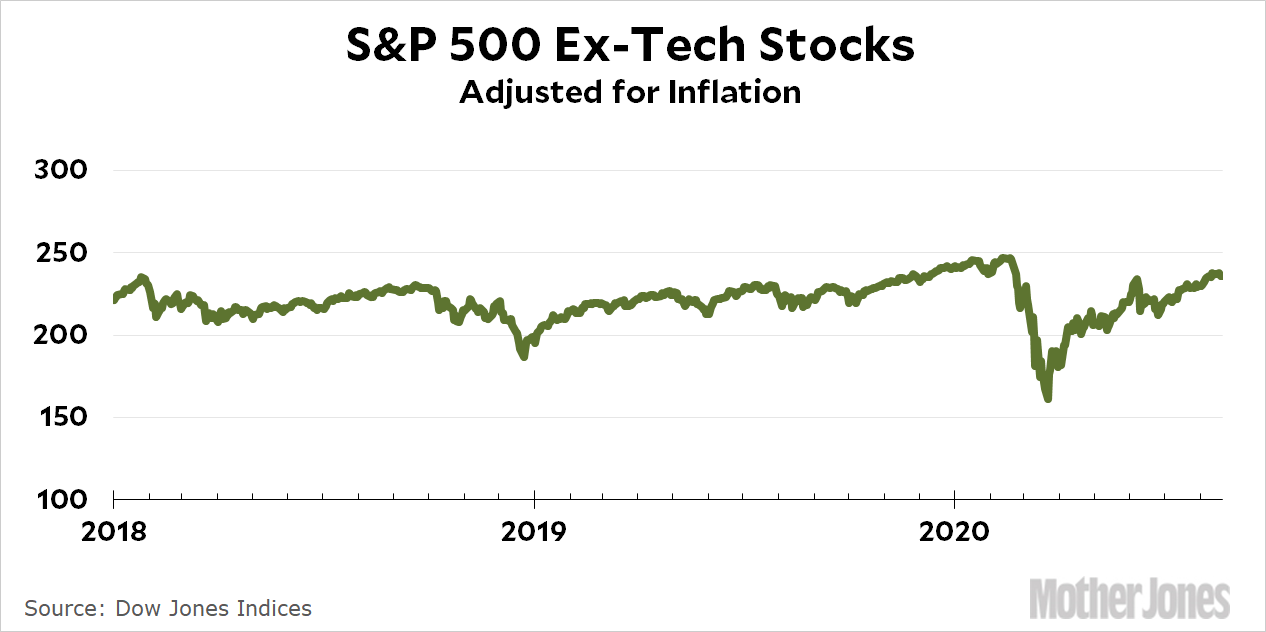In his column today Paul Krugman flicked at a point about the “soaring” stock market that deserves a bit more attention:
The recent rise in the market has been largely driven by a small number of technology giants. And the market values of these companies have very little to do with their current profits, let alone the state of the economy in general. Instead, they’re all about investor perceptions of the fairly distant future.
Take the example of Apple, with its $2 trillion valuation. Apple has a price-earnings ratio — the ratio of its market valuation to its profits — of about 33. One way to look at that number is that only around 3 percent of the value investors place on the company reflects the money they expect it to make over the course of the next year. As long as they expect Apple to be profitable years from now, they barely care what will happen to the U.S. economy over the next few quarters.
Longtime readers know that when I say something “deserves a bit more attention,” that means you’re about to see a chart. Here it is:

This is an S&P 500 index with tech stocks removed and adjusted for inflation. You can see two things. First, over the past three years it’s not very impressive. Second, it plunged in March thanks to COVID-19 and has never recovered completely.
(And that’s even though this index includes powerhouses like Amazon, Google, and Facebook, none of which are categorized as “information technology.”)
In one sense you don’t want to make too much of this. You can always remove the top performer from a broad stock index and produce a weaker looking trend. Still, this is more dramatic than usual. This isn’t just weaker looking, it’s practically flat. The collective performance of literally everything in the United States is kind of dismal except for companies like Microsoft, Apple, and Oracle.
So when someone asks why the stock market is doing so great even though we’re in the middle of a massive pandemic, this is part of the answer: it’s not doing so great. Aside from tech stocks, the market has been ho-hum over the past few years and is still down 4 percent from its pre-pandemic level. Investors obviously have some confidence that the economy will rebound once we approve a vaccine and the pandemic is finally sidelined—as they should—but they’re hardly being cheerleaders for the overall economy. They just like tech stocks.













